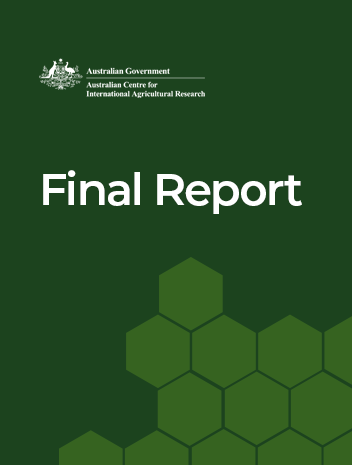- HomeHome
-
About ACIAR
- Our work
- Our people
-
Corporate information
- ACIAR Audit Committee
- Commission for International Agricultural Research
- Policy Advisory Council
- Agency reviews
- Executive remuneration disclosure
- Freedom of information (FOI)
- Gifts and benefits register
- Information publication scheme
- List of new agency files
- Contracts
- Legal services expenditure
- Privacy impact assessment register
- Commonwealth Child Safe Framework
- Benefits to Australia
- Careers
- 40 years of ACIAR
-
What we do
- Programs
- Cross-cutting areas
- Resources
- Where we work
-
Funding
- Research projects
- Fellowships
-
Scholarships
- John Allwright FellowshipScholarships to study in Australia for ACIAR partner country scientists to have Australian postgraduate qualifications
- ACIAR Pacific Agriculture Scholarships and Support and Climate Resilience Program
- Alumni Research Support Facility
- Publications
- News and Outreach
Developing productive, sustainable and profitable smallholder beef enterprises in central Vietnam - final report
Date released
02 October 2019
ISBN
978-1-925747-81-2
Publication Code
LPS/2012/062
Overview
This project aimed to develop more efficient smallholder cattle-growing systems, through improved feeding and management.
The growing demand for beef in Vietnam is providing an opportunity for smallholder crop-livestock farmers in Central Vietnam to increase household income through more productive beef breeding and fattening enterprises. Significant challenges need to be overcome to ensure these enterprises can be both profitable and sustainable. These include the low fertility of sandy soils in the region, long dry seasons, waterlogging, scarcity of good quality feed, and poor cattle management practices.
This project built on an ACIAR project (SMCN/2007/109/3) which benchmarked these crop-livestock systems and evaluated strategies for improved productivity. Forage production using new species and better cattle management practices increased productivity and reduced labour spent supplying feed for cattle. An external review identified the importance of building on this work to develop whole production system strategies and improve overall system profitability.
The project extended its reach to the Central Highlands province of Dak Lak where there has been a longer period of cattle feeding and management research and development. Breeding and fattening systems in Dak Lak are more developed than on the South Central Coast, and the greatest opportunity for enhancing producers' livelihoods was through understanding and engaging with growing market opportunities.
For beef cattle farmers who are already production orientated, the project developed stronger integration with markets. It also identified and developed pathways for knowledge exchange and adoption, to expand impacts within smallholder beef cattle enterprises. Improved cattle production practices will increase profitability for smallholders and also bring environmental benefits by reducing overgrazing.



